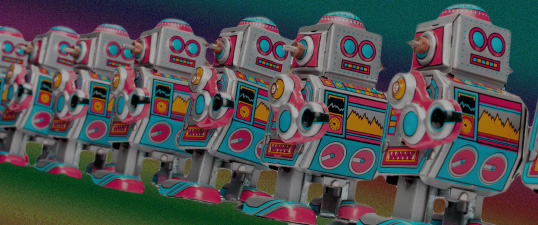Digital cryptocurrencies and NFTs are all over the news these days, as the April 2021 issue of the SWCP Portal points out. Every day, breathless stories detail the latest developments in this rapidly-evolving field. Lately it’s been a real rollercoaster ride after Coinbase, a cryptocurrency market, went public. Venmo, a popular online social payment site, added to the fever by jumping onboard. Every day, new markets are set up for NFTs, those digital collectibles, with some amazing prices being paid, even though at this point it is quite uncertain that they have any real or enduring value whatsoever.
As with most shiny new things economic, supporters are wildly enthusiastic. However, the whole concept of crypto is wrapped up in huge clouds of hype, arcane theories, and even more esoteric procedures. This makes the real situation very hard to accurately judge for it all seems weirdly out of sync with reality. It doesn’t help that some cryptocurrencies, like Dogecoin, are basically jokes, as are a lot of NFTs.
Cryptocurrencies, after all, are based on nothing more than encrypted entries in long blockchains, electronic ledgers spanning thousands of computers. They are generated by performing immense numbers of useless cryptographic calculations that soak up more and more energy. For it is only the difficulty and expense of doing all those calculations which prevent blockchains from being hacked like everything else.
All this makes it, as the Portal article stated, impossible to tell at this time if this is “truly revolutionary technology, the biggest financial hoax ever, or something else entirely”. The reason why this is so is because of the uniqueness of cyberspace and the problem of scarcity.
Rarity rules the world
Economics exists simply because human needs and wants generally vastly outnumber the physical ability of people to satisfy them. Hunting big game animals, tilling the soil, mining the earth, or manufacturing objects, all take time, planning, and work to succeed. Hence things that are more difficult to acquire or make are more highly valued.
But the trick is that most of the difficulty, the main expense, comes from the initial effort. A field, for instance, must be cleared of rocks and vegetation and the ground broken up before it can be planted while watering, weeding, and harvesting takes far less hard work. In industry, working prototypes must be designed, built, and tested long before the finished product can be manufactured.
Yet once those initial steps are completed, it is relatively easy and inexpensive to keep going. So creators not only want recompense for the final product, be it beans or ballads, but for all the extra exertion that went into their initial creation and development in the first place.
The way to do this usually has been to make the resulting products even rarer. Artificial scarcity may be achieved in many ways. Everything from private agreements between producers (cartels and monopolies) to restrictions of who may make or distribute items (patents and copyrights) to designing limited lifetimes for critical parts (planned obsolescence) have been used, not only to keep prices high but to hide that fact from those desiring the items.
It has been argued that without artificial scarcity being applied to everything, this world would be a paradise with quite enough of everything to go around for everybody. Yet the inevitable result of artificial scarcity seems to be that those who control the production luxuriate in abundance, while millions of other people – including those who do the actual work – scrape by with very little.
Sound familiar? By proposing that the producers also control the production of goods to eliminate these differences is why communism seemed like such a good idea to so many. But communism doesn’t work, partially because the idea of scarcity is so ingrained into humans by evolution and because wealth and social status go hand in hand.
However, if scarcity is an enduring problem in the physical world, it is a insolvable paradox, a real nightmare, in cyberspace.
Owning data
The digital universe, cyberspace, is quite different from physical reality in a number of important ways. One major distinction is that in cyberspace everything can be freely copied and reproduced or changed, because nothing exists in cyberspace but information. It’s all just data: 1s and 0s arranged in patterns that can be replicated and modified and nothing else.
Those meaningful patterns, whether they take the form of emails, cat pictures, technical documents, webpages, software or whatever, can be infinitely copied and reproduced. In fact, they must be in order to make the internet work. Because the kitty picture your sister sent you is not the one on her laptop. It may be absolutely identical down to the last pixel but it is a copy, and there were other copies made and instantly erased at every single hop along the way.
Copying data from one machine to another is how data moves. It is the fundamental basis of the net and therefore cannot be eliminated. The best that can be done is to employ other patterns of data, such as security software, to try to regulate where, how, and by whom they can be accessed and copied.
So an incredible amount of intellectual labor has been expended into trying to enforce the physical methods of regulating artificial scarcity in a non-physical realm where everything – by its very nature – can be replicated endlessly and changed at will.
Limiting that effortless reproduction is the intent of DRM (Digital Rights Management) and the blockchain by recording who did what when, while preventing alteration is the purpose of all cybersecurity measures and cryptography. And finally there are NFTs (Non-Fungible Tokens), which use these to apply the concept of “ownership” to chunks of data by creating unique receipts in the blockchain for specific copies.
It only works at all simply because the cost to hackers is too high. But the competition between hackers and developers is unending. Already there are problems with NFTs not just getting hacked, but attributing identity. Many creators and buyers as well employ usernames, which cannot always be securely attributed to original individuals, and all websites that carry the “original” copy can disappear, be changed or hacked also. And quantum computing or other technical achievements might upturn everything.
Because of all this, cryptocurrencies and their NFT derivatives cannot be anything more than speculative bubbles, like the Tulip Mania bubble of Seventeenth Century Holland, or the Mississippi Bubble of France a century later. But their inevitable collapse led to new developments – the tulip craze likely led to closer studies of genetics, and the system of central banks which undergird today’s global economies survived the Mississippi and South Sea fads.
What may most readily surmount future crashes is the blockchain and some form of NFT, but only if the ecological price of all that electricity and computing power being squandered is drastically reduced. Their chief benefits to society at the current time beyond anonymous, unregulated digital currency is that NFTs are one of the few ways digital artists can get paid for the true value of their work.
NFTs might be a way to one day solve the digital copyright problem which DRM, applied software blockages to prevent copying, failed at miserably. Copyright is artificial scarcity applied to printed objects, (and by extension) music, film, and software. It was invented by publishers to protect themselves from rival publishers, not to nurture writers. Only later did copyright help provide creators with some rights over their own works and a decent living.
Blockchains recording transactions already provide some sense of digital ownership. Cyberspace’s peculiarities may be further tamed by the same clever thinking as went into the rules behind Bitcoin to create workable systems of which make it economically impractical to take undue advantage.
Perhaps someday humanity will move beyond forcing physical constraints onto nonphysical items and learn how to live in a truly unlimited and abundant universe. But meanwhile, just as counterfeiters, forgers, pickpockets, and con artists continue to flourish in the real world, so too in cyberspace. The ancient Roman advice of “Caveat emptor” – “Buyer beware” – is, and always will be, sound wisdom.

